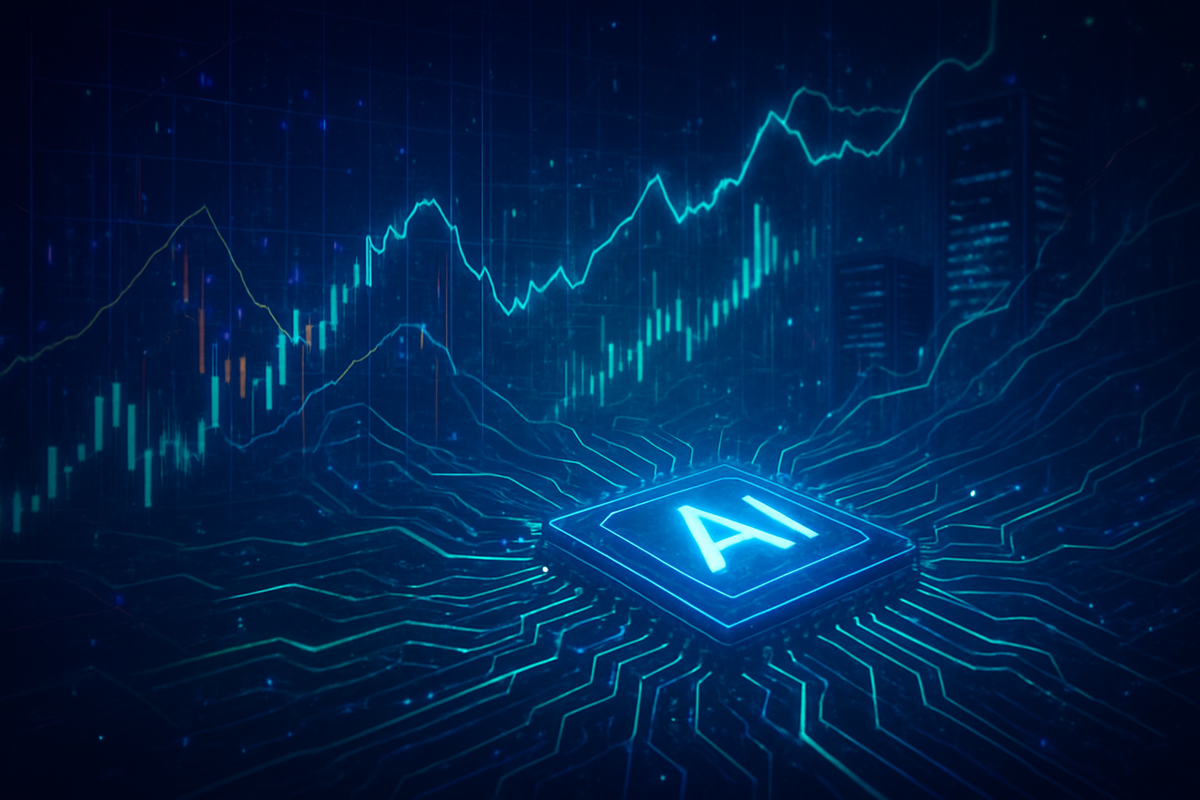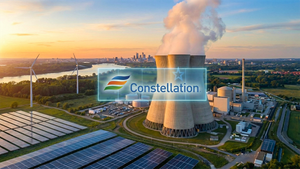
As November 2025 draws to a close, the financial world is grappling with an increasingly urgent question: is the artificial intelligence (AI) surge propelling the stock market into a speculative bubble, or is it merely the initial phase of a profound technological revolution? This debate, fueled by astronomical valuations and unprecedented capital expenditure, has captivated investors, analysts, and even seasoned billionaires, prompting a re-evaluation of investment strategies and market expectations. The immediate implications are significant, with heightened volatility and a critical need for investors to discern genuine innovation from fleeting hype.
Unpacking the AI Phenomenon: Dalio's Warnings and Nvidia's Triumph
The discussion around an "AI bubble" has intensified throughout 2025, reaching a crescendo as market participants weigh the transformative potential of AI against the historical precedents of speculative excesses. Billionaire investor Ray Dalio, founder of Bridgewater Associates, has been a vocal proponent of the bubble thesis. As of November 2025, Dalio asserts that the U.S. stock market, particularly the mega-cap technology segment driven by AI, is approximately "80%" into a full-blown bubble, drawing stark comparisons to the conditions preceding the 1929 crash and the 2000 dot-com bust. His proprietary "bubble indicator" signals high risk, noting that the majority of market gains are concentrated in a few large tech stocks, creating a polarized economic landscape. Despite these dire warnings, Dalio advises against panic selling, emphasizing the difficulty of timing a bubble's burst and advocating for extensive diversification as a primary defense. He stresses that while AI is undeniably transformative, investors might be "confusing technological success with investment success," leading to valuations detached from future cash flows.
Adding a complex layer to this narrative are the recent, stellar earnings results from Nvidia (NASDAQ: NVDA), a company at the very heart of the AI revolution. On November 19, 2025, Nvidia announced record third-quarter fiscal year 2026 earnings, reporting $57.0 billion in revenue, a remarkable 62% year-over-year surge, and forecasting an even more optimistic $65 billion for the current quarter. This performance, driven overwhelmingly by its Data Center segment, which saw $51.2 billion in revenue, significantly surpassed analyst expectations. CEO Jensen Huang directly addressed "AI bubble" concerns, stating, "From our vantage point, we see something very different," implying a robust and fundamental shift rather than speculative froth. The market reacted with enthusiasm, pushing Nvidia's stock up over 5% in after-hours trading and providing a crucial "pulse check" that temporarily tempered broader "AI bubble" anxieties.
The timeline leading up to this moment has been characterized by an intense capital expenditure cycle, with tech giants pouring trillions into building AI infrastructure. This massive investment, reminiscent of the telecom boom of the late 1990s, has created unprecedented demand for advanced GPUs and data centers. However, this spending spree has also raised questions about profitability, with some leading AI companies reportedly operating at significant losses despite massive investments. The confluence of Dalio's cautionary macroeconomic perspective and Nvidia's undeniable commercial success paints a picture of a market in flux, where the fundamental strength of AI's underlying technology is undeniable, yet the sustainability of its broader market valuation remains hotly contested.
Winners and Losers in the AI Gold Rush
The AI boom, and the accompanying bubble discussion, has created a clear delineation between companies poised for significant gains and those facing substantial risks. At the forefront of the winners are the foundational infrastructure providers, the "picks and shovels" of the AI era. Beyond Nvidia, companies like Advanced Micro Devices (NASDAQ: AMD), a direct competitor in CPUs and GPUs, are benefiting from increased AI budgets. Taiwan Semiconductor Manufacturing Company (NYSE: TSM), the world's largest contract chip manufacturer, is indispensable, fabricating advanced semiconductors for nearly all major AI players. Broadcom Inc. (NASDAQ: AVGO) thrives with its high-performance networking solutions and custom ASICs, essential for AI data centers.
Hyperscale cloud providers such as Microsoft (NASDAQ: MSFT), Amazon (NASDAQ: AMZN), and Alphabet (NASDAQ: GOOGL) are not only integrating AI into their vast service offerings but are also investing hundreds of billions in building AI-dedicated data centers. While their capital expenditures are immense, their foundational role positions them for long-term gains. Specialized AI infrastructure providers like Super Micro Computer (NASDAQ: SMCI), with its AI-optimized servers and cooling technology, and "neocloud" providers such as CoreWeave (CRWV) and Nebius Group N.V. (NBIS), which offer GPU cloud infrastructure for AI workloads, are also seeing significant demand. Memory and storage companies like Micron Technology (NASDAQ: MU) are riding the wave of increased data generation and processing.
On the software and application front, Palantir Technologies (NYSE: PLTR), with its data analytics and applied AI platforms, and Snowflake (NYSE: SNOW), a cloud computing and AI company, are leveraging AI to deliver value across industries. Meta Platforms (NASDAQ: META) is heavily investing in generative AI and integrating it into its social media platforms, while Oracle (NYSE: ORCL) is strategically shifting its cloud offerings towards AI workloads.
However, the AI gold rush also carries significant risks. Companies with overinflated valuations and weak fundamentals, or those merely riding the "AI" buzzword without delivering tangible results, are vulnerable. C3.ai (NYSE: AI), an enterprise AI software company, serves as a cautionary tale, facing scrutiny due to missed sales targets and leadership uncertainties, leading to a substantial stock drop in 2025. Traditional industries slow to adopt AI risk losing competitiveness, as AI revolutionizes efficiency and decision-making. Furthermore, data center companies, despite booming demand, face challenges related to energy consumption, land availability, and grid capacity, which could lead to project delays and increased costs. The market is increasingly scrutinizing AI investments, favoring those that can demonstrate tangible returns and sustainable growth beyond mere hype.
Wider Significance: Echoes of the Past, Blueprint for the Future
The "AI bubble" discussion carries profound wider significance, shaping not only financial markets but also broader industry trends, regulatory landscapes, and geopolitical dynamics. This debate is deeply intertwined with an unprecedented surge in investment and market concentration. AI has become the undisputed favorite for venture capital, attracting over 70% of global VC funding in the first half of 2025, with total AI investments already surpassing previous full-year records. This capital is heavily concentrated in mega-rounds for major AI players and foundational model developers, leading to a disproportionate share of market gains driven by a few "Big Tech" firms. Nvidia's $5 trillion valuation in October 2025, representing roughly 8% of the S&P 500, exemplifies this concentration, raising systemic risks for the broader market.
The parallels to the dot-com bubble of the late 1990s are frequently drawn. Both periods are characterized by intense hype, speculative investments, and rapidly inflating valuations often detached from immediate profitability. The massive infrastructure buildout for AI, involving trillions in data centers and GPUs, echoes the telecom infrastructure overbuild of the dot-com era. However, crucial differences exist. Today's leading AI firms, unlike many dot-com startups, are often established, highly profitable companies with robust business models and significant cash flows. There is also demonstrable, persistent demand for AI computing power and services, often exceeding supply, suggesting a fundamental utility beyond mere speculative interest. AI is also inherently tied to energy consumption for computation, giving it the economics of infrastructure rather than traditional software.
Regulatory and policy implications are rapidly emerging. The rapid, unchecked growth of AI has prompted calls for stronger guardrails from regulators globally, particularly concerning deepfakes, biometric surveillance, and ethical AI use. The geopolitical AI race is also shaping policy, with nations initiating sovereign AI programs to secure leadership. Furthermore, the potential for AI to disrupt labor markets on a broad scale raises profound questions about the future of work, wealth concentration, and the need for policy responses such as education reform and labor protections. The enormous energy footprint of AI infrastructure also necessitates policy interventions to promote sustainable energy sources. A potential market correction or bubble burst could trigger a re-evaluation of strategic alliances, impact cloud provider margins due to intense competition, and expose vulnerabilities in the private credit market, where much of the speculative AI financing is taking place.
What Comes Next: A Path Through Uncertainty
The future of the AI market and the "AI bubble" discussion will likely unfold through a series of short-term adjustments and long-term transformations. In the short term (late 2025 - 2026), while some tech stock declines have fueled investor jitters, strong balance sheets and profit growth among leading tech companies, as noted by Goldman Sachs, suggest a market bubble might not be in imminent danger of bursting. Nvidia's continued strong performance has temporarily assuaged fears. However, the focus is expected to shift towards specialization and efficiency in AI, moving beyond blind scaling. Geopolitics and global supply chains will heavily influence AI chip design and manufacturing.
Looking further ahead (2027 and beyond), the AI market is projected for substantial growth, with widespread enterprise adoption transforming industries from healthcare to finance. However, the long-term sustainability hinges on clear productivity and profitability improvements from AI applications. Companies will need to make strategic pivots: investing in AI literacy and skills development, embracing agility, prioritizing ethical AI use, modernizing infrastructure, and developing AI-enabled products that deliver measurable business value. A strong data strategy will be crucial for resilience.
Emerging markets present both opportunities and challenges. AI can help them leapfrog traditional development stages, particularly in sectors like agriculture and healthcare. New AI hubs are emerging globally, attracting investment and talent. However, infrastructure gaps, limited access to quality data, language barriers, financial constraints, and skills shortages pose significant hurdles.
Various scenarios could unfold. We might see a Sustainable Commercialization Scenario, where AI applications consistently deliver productivity and profitability, justifying investments. A Soft Landing/Correction Scenario could involve a market reassessment where valuations recalibrate to more realistic levels without a catastrophic collapse. A Delayed Monetization Scenario might occur if infrastructure development continues but commercial applications fail to meet revenue expectations, leading to consolidation. Less likely, but still debated, is a Hard Crash Scenario akin to the dot-com bust. Most experts anticipate a period of consolidation and rationalization, with well-funded tech giants dominating and acquiring smaller, struggling AI startups. The market is also moving towards an "Agentic Era" by 2026, where AI systems act with intent and autonomy, further embedding AI into business operations.
Comprehensive Wrap-Up: Navigating the New Economic Epoch
As November 2025 concludes, the "AI bubble" discussion underscores a pivotal moment in financial history. The key takeaway is a tension between the undeniable, transformative power of artificial intelligence and the inherent risks of speculative market behavior. While industry leaders like Nvidia demonstrate robust, tangible demand for AI infrastructure, concerns persist about the broader market's valuation and the long-term profitability of all AI ventures. The market is assessing whether the vast investments will translate into widespread, measurable returns beyond the "picks and shovels" providers.
Moving forward, the market is expected to transition from pure hype to a more pragmatic phase, demanding clear ROI from AI initiatives. CFOs will play a crucial role in scrutinizing AI deals, pushing for demonstrable business impacts. While the U.S. economy might see modest growth in 2026, partly due to AI investments, a slowdown in cloud capital spending growth is anticipated, signaling a more measured pace of infrastructure build-out.
The lasting impact of AI is projected to be immense, reshaping labor markets, boosting productivity, and potentially offsetting demographic challenges. However, these profound economic benefits are expected to materialize as a "slow-burn" over the late 2020s and into the 2030s, rather than an immediate explosion. AI's integration into financial markets will also lead to faster and potentially more efficient trading, albeit with increased volatility.
Investors in the coming months should remain vigilant. Watch for:
- Profitability Beyond Infrastructure: Scrutinize companies that can demonstrate clear pathways to generating returns from their AI applications, not just those building the foundational tools.
- Enterprise ROI and Adoption: Pay close attention to corporate earnings and management commentary on the successful implementation and measurable ROI of AI initiatives.
- Valuation Justification: Be cautious of companies with inflated stock prices lacking strong fundamentals, durable cash flow, or a clear competitive advantage. Focus on established tech leaders with strong balance sheets.
- Software Sector Dynamics: Monitor how traditional software companies adapt to AI, through integration, new products, or revised pricing models, and its impact on their revenues.
- Capital Allocation Shifts: A potential slowdown in corporate share buybacks from hyperscalers could reduce market demand as capital is reallocated to AI infrastructure.
- Geopolitical and Regulatory Landscape: The evolving U.S.-China AI competition and global regulations will continue to influence supply chains and market sentiment.
- Monetary Policy: The Federal Reserve's interest rate path and inflation will remain critical factors, impacting market liquidity and appetite for risk.
In conclusion, the AI market in late 2025 is at a critical juncture. While the transformative power of AI is widely acknowledged, a discerning approach is essential. Investors who prioritize companies with demonstrable value creation, sound financials, and clear strategies for long-term AI integration, rather than succumbing to speculative hype, will be best positioned to navigate the opportunities and challenges of this new economic epoch.
This content is intended for informational purposes only and is not financial advice


















